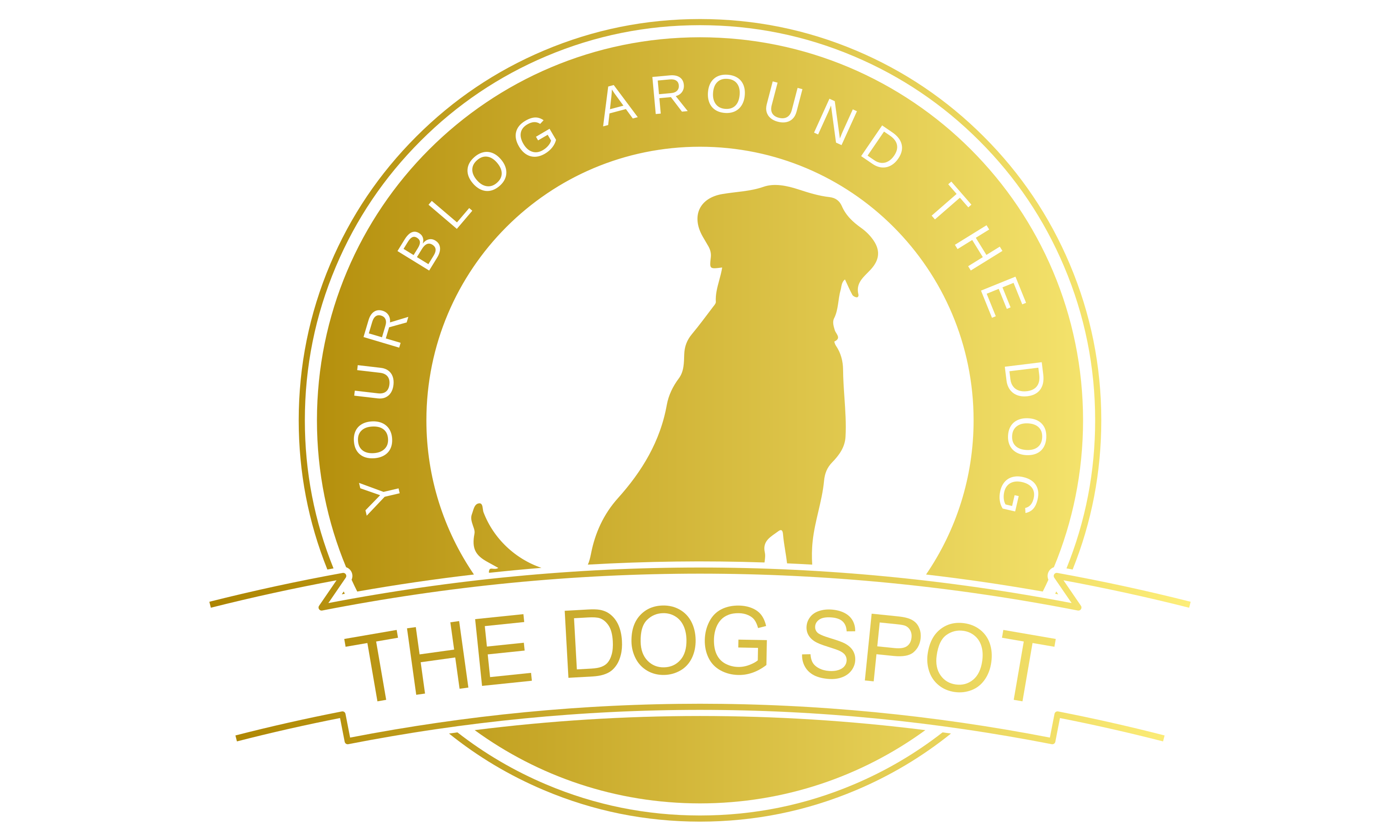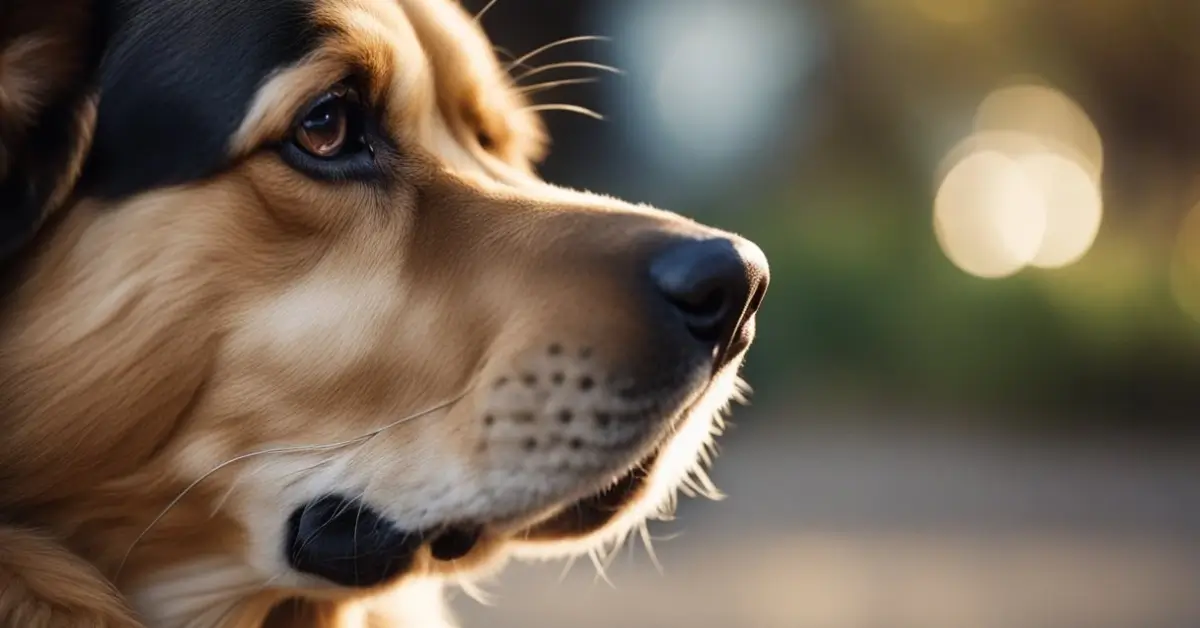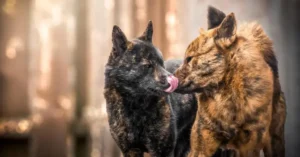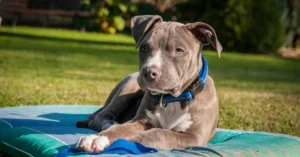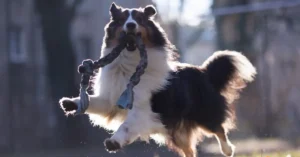As dog owners, we know that our beloved four-legged friends are more than just pets. They are our loyal companions who bring joy and love into our lives. However, as our dogs age, their needs change, and our approach to training should adapt accordingly. That’s why this article is all about “how to train an older dog.” We’ll provide you with some tips and tricks on how to keep your senior dog mentally and physically fit.
It’s definitely worth delving into the question of how to train an older dog.
Training and learning new things with your dog not only contribute to their fitness and agility as they age but also enhance their overall well-being. However, it’s important to keep in mind that training an older dog is different from training a younger one. Older dogs may have physical limitations or medical issues that require your attention and consideration. Additionally, they may have developed bad habits that need to be unlearned.
In the following paragraphs, we will discuss how to address these challenges and provide helpful tips on how to train an older dog for you.
Pros:
🐶 Easy to read: The book is well-written and easy to understand, making it accessible to both new and experienced dog owners.
🐶Positive training methods: Zak George promotes positive reinforcement training methods, which are proven to be effective and humane.
🐶 Comprehensive guide: The book covers everything from basic obedience training to more advanced skills, making it a great resource for all dog owners.
🐶 Great supplement to videos: While Zak George's YouTube channel is an excellent resource, the book provides more detailed information and serves as a great supplement to the videos.
🐶Helpful tips: The book is full of helpful tips and tricks for dealing with common dog training issues.
Cons:
🙀 Basic information: While the book covers a lot of ground, some readers may find that the information presented is too basic for their needs.
🙀 Limited troubleshooting: While the book does provide some troubleshooting tips, it may not be enough for more complex issues.
🙀 Not a quick fix: Like any training method, positive reinforcement training requires time and effort. Some readers may be disappointed if they are expecting a quick fix for their dog's behavior issues.
How To Train An Older Dog: Understanding Your Older Dog
As our furry companions age, they may experience changes in their behavior, health, and mobility. Understanding these changes is crucial for training an older dog. Here are some important facts you should consider:
Behavior
Older dogs may become more lethargic and may require more rest periods. Their attention span and overall behavior can change with age. Additionally, dogs can become more stubborn and set in their ways as they get older. If you want to change these habits, it’s important to approach training with patience and a positive attitude and ensure you give your dog enough breaks and rewards.
Attention
Another challenge in the topic of how to train an older dog is your furry friend’s ability to concentrate and the risk of being easily distracted. Therefore, it’s important to make training sessions shorter and more frequent rather than long and infrequent. This helps your dog retain information and stay motivated.
Routine
Older dogs have established routines and need a structured daily schedule. Maintaining a regular schedule for feeding, exercise, and training can help your dog feel more secure and comfortable. If you want to change routines or daily rituals, introduce changes with patience and calmness, giving your dog the opportunity to adjust gradually.
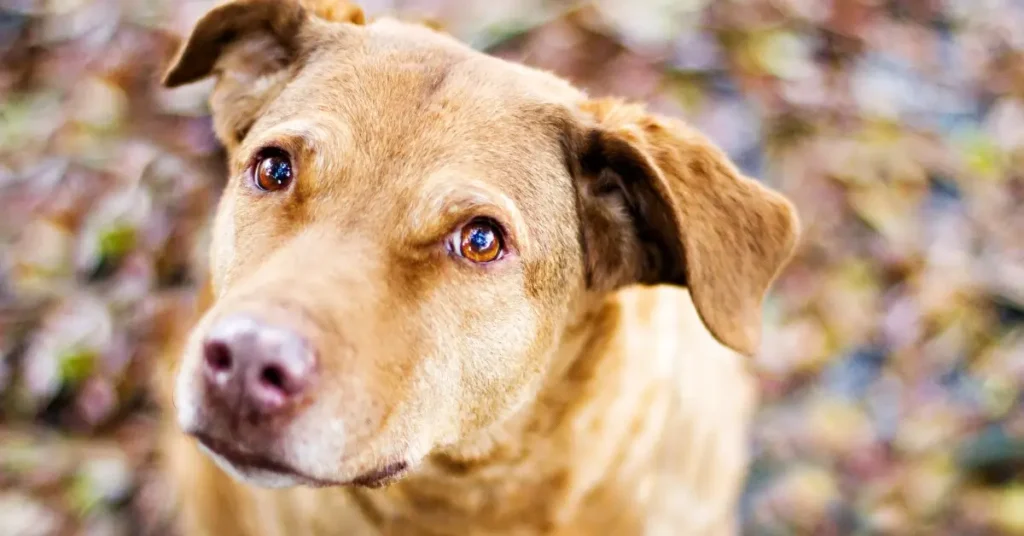
Health Issues
Consider in your plan on how to train an older dog if your dog has health issues such as arthritis, kidney problems, and mobility issues. It’s important to take these issues into account when training your dog and consult with your veterinarian about any necessary adjustments.
The most important things you should bring to the table when it comes to how to train an older dog with your four-legged companion are patience, understanding, and a willingness to adapt. By tailoring the training plan to your dog’s behavior, attention span, routines, and health issues, you will both have a lot of fun learning new tricks and exercises together.
Preparation for Training
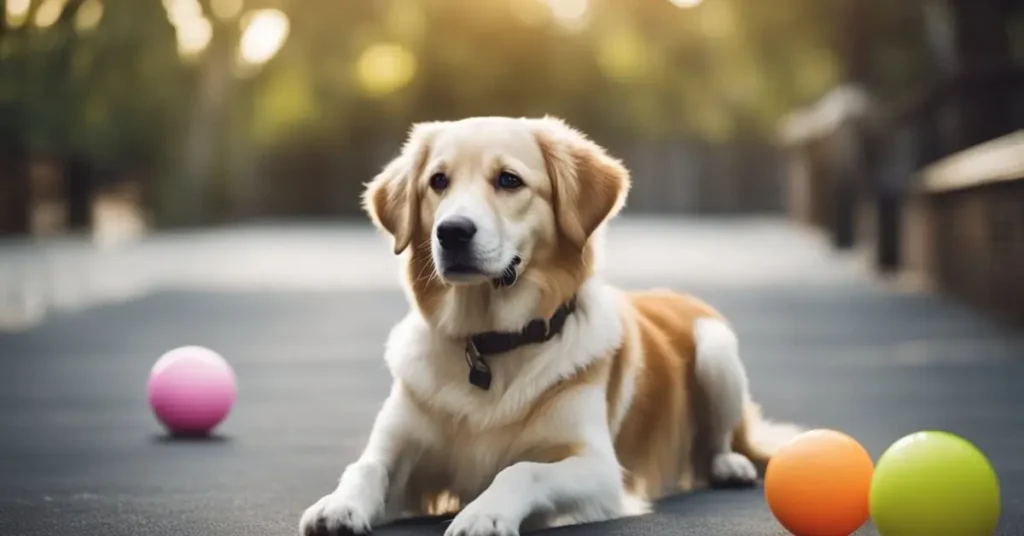
After you’ve explored your dog’s behavior and prerequisites for training in the context of “how to train an older dog,” the next step is to make the right preparations.
There are several things to keep in mind during the preparation and when creating a training plan. If you have identified any health issues in your dog, have them assessed by your veterinarian before starting training.
Once you have received the green light from the veterinarian, make sure you have the necessary equipment for your training sessions. The right equipment can include items such as a crate or playpen, but almost always, you’ll need a leash and treats. If you plan to train your dog in a crate, it is essential that the crate is the right size for your loyal companion and that your furry friend feels comfortable in it.
The crate can be a valuable tool in the task of “how to train an older dog,” but the key is the right way to train. You should gradually acclimate your dog to the crate and ensure that they associate positive experiences with it. For example, you can start by leaving the crate door open and placing treats inside. Once your dog is used to going into the crate, you can start closing the door for short periods.
In addition to the crate, you can also consider incorporating a playpen or enclosure into your training to spatially limit the training area and provide more security for your dog. This can be especially helpful if you have other pets or children in the house.
Using a leash during training provides safety for both you and your dog and is another important part of good preparation.
Finally, with the choice of the right treats, make sure that your dog feels rewarded and remains motivated to participate in the training.
Overall, preparation in the task of “how to train an older dog” is an essential part of the success or failure of your training sessions. By ensuring that your dog is healthy and relaxed, and that you have the necessary equipment, you can guarantee that training will be enjoyable and rewarding for both parties.
Basic Commands and New Tricks
Training an older dog to learn new tricks and commands is beneficial for their mental and physical health. It can enhance their self-control, cognitive functions, and overall well-being. In this section, we will discuss some effective ways to teach your senior dog new skills.
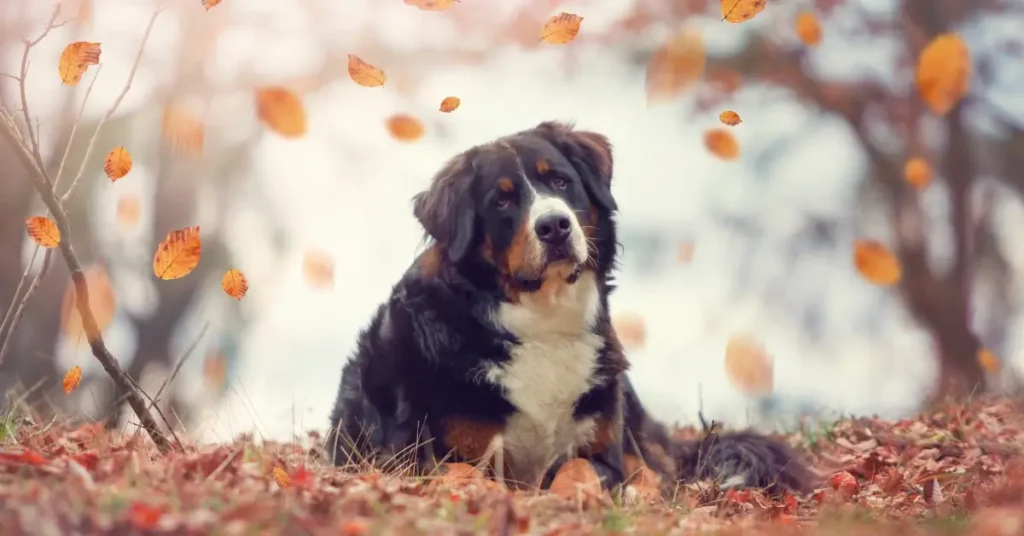
Teaching Basic Commands
Before you begin teaching your dog new tricks, it’s important to ensure that they have mastered basic commands like “sit,” “stay,” “come,” and “lie down.” These basic commands serve as the foundation for more complex tricks. Here are some tips on how to train an older dog:
Always use positive reinforcement and reward your dog with treats, praise, and affection when they perform exercises and commands correctly. This motivates your loyal companion to repeat the learned behavior in the future and remain engaged in learning new things with you.
Be patient: Older dogs may take longer to learn new tricks and habits, so it’s essential to remain calm and patient during training.
Use hand signals: Alongside verbal cues, use hand signals to reinforce your commands when teaching new tricks. This helps your dog understand the expected behavior, even when they may not hear you properly, for example, due to a long distance between you two.
Learning New Tricks
Once your dog has mastered basic commands, you can start teaching them new tricks. Here are some tips:
Begin with simple tricks like “turn around” or “shake a paw” before moving on to more complex tricks. This will boost your furry friend’s confidence and motivation and establish a good foundation for the question of how to train an older dog.
Reward good or correctly learned behavior with treats, praise, or a play session.
Break the trick down into small steps and teach your dog one step at a time. This will help them better understand the trick and make the learning process easier.
Practice the trick regularly with your furry companion to reinforce learned tricks and routines and improve their performance.
Introducing new tricks and habits is a great way to enhance your furry friend’s achievements and overall well-being.
Does your dog always pull on the leash when you’re out for a walk? Then take a look at our article on this topic.
House Training Your Older Dog
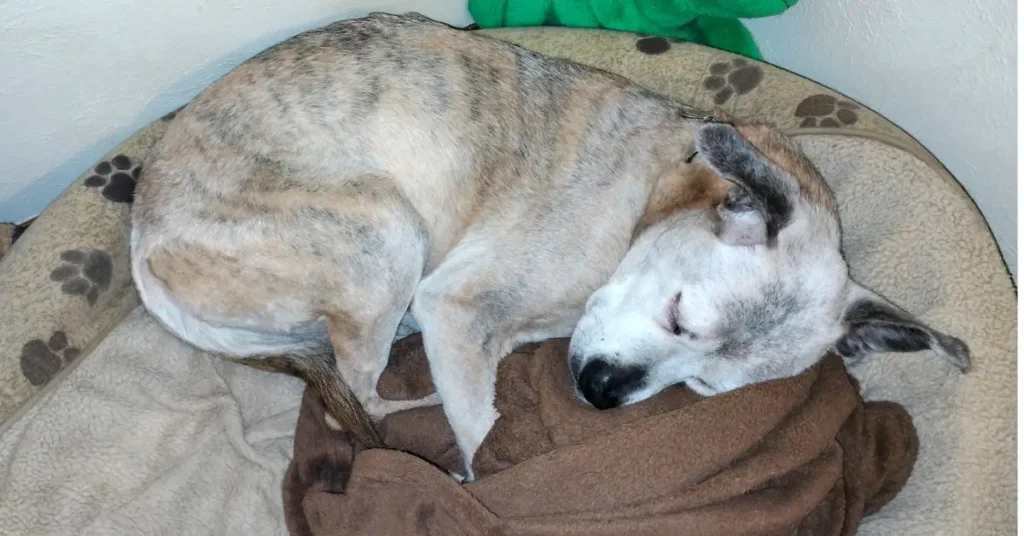
Training an older dog in terms of housebreaking can be a challenge when it comes to “how to train an older dog.” Whether you have adopted a senior dog or your faithful companion is simply getting older, there are some important things to consider to tackle this issue together.
As mentioned in the previous paragraphs, always be aware that an older dog may take a longer time to learn new habits and routines and to overcome unwanted behaviors.
One of the first measures you should take regarding housebreaking is to reassess your routines. Do you feed your dog at the same time every day, and do you take them for walks at the same times? Does your furry friend have enough opportunities to do their business outside? Adapting these routines to your dog’s needs will help them quickly learn to do their business outside.
Housebreaking is a habit that needs to be practiced, so always remember to reward good behavior, no matter what kind of training it is.
Also, be aware that accidents can happen. Even the best-trained dogs can have occasional accidents, especially in old age. When this occurs, do not punish your dog. Instead, clean up the mess and continue with your housebreaking routine.
In summary, how to train an older dog in terms of housebreaking requires a lot of patience, time, and the application of positive reinforcement.
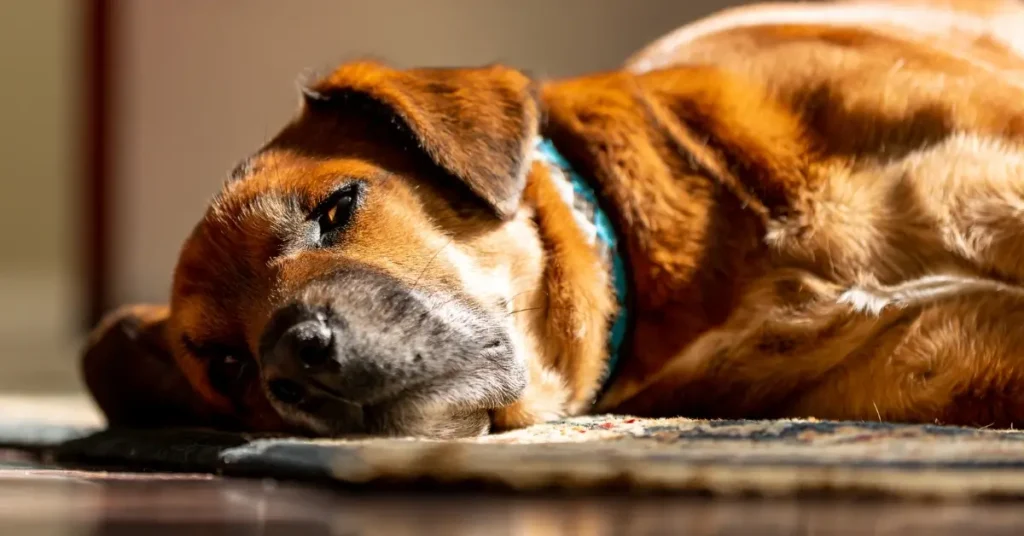
Dealing with Behavioral Problems
As dogs age, they can develop behavioral problems. Some of the most common challenges include memory loss, anxiety, aggression, and the loss of hearing or vision. These issues can make your furry friend feel stressed, anxious, and confused, leading them to behave atypically.
When it comes to “how to train an older dog” with behavioral problems, patience and understanding are the cornerstones. Punishing your dog for their behavior is not an effective way to address the issue. Instead, focus on positive reinforcement and reward-based training methods.
If your dog exhibits unusual behaviors, it’s important to rule out possible underlying medical causes that could be causing the problem. Memory loss or anxiety may have a medical basis. So, if your dog displays symptoms that don’t align with their usual behavior, it’s crucial to take them for a veterinary examination.
Adaptation can also be a significant factor in managing negative behaviors in older dogs. With advancing years, dogs can experience changes in their environment that may be stressful for them, such as moving to a new home or losing a companion. It’s essential to help your dog gradually adapt to changes and provide them with plenty of love and attention during this time.
In some cases, bad habits may be the root cause of your dog’s behavioral issues. If your dog has developed bad habits like excessive barking or chewing on furniture, it’s important to address these problems through training and positive reinforcement.
In summary, dealing with behavioral issues in older dogs requires patience, understanding, and a commitment to positive reinforcement and reward-based training methods. By ruling out possible medical problems, assisting in adapting to changes, and addressing bad habits, you can provide your dog with a happy and healthy retirement.
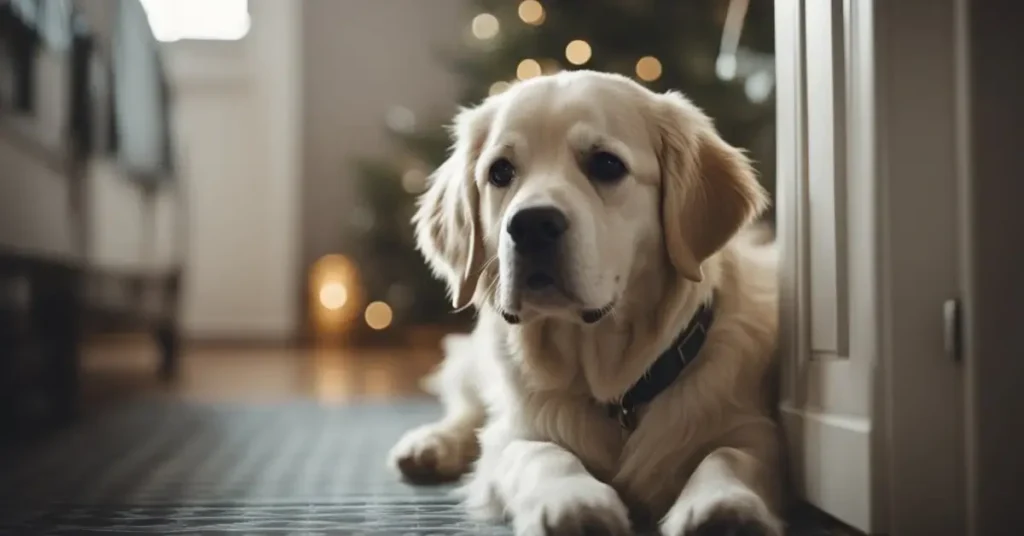
Exercise and Mental Stimulation
Even as they age, it is crucial to challenge our furry companions both physically and mentally. Exercise and cognitive stimulation are essential for maintaining their health and well-being.
When it comes to “how to train an older dog,” it is also crucial to maintain the mobility and strength of your aging furry friend while always keeping potential limitations in mind. Older dogs may not be able to handle the same level of activity as they did before. A leisurely walk around the block or a game of fetch in the backyard can be excellent low-impact activities for our seniors.
Mental stimulation is just as important as physical exercise. It can help keep their minds sharp and prevent cognitive decline. There are many ways to address “how to train an older dog” concerning their mental fitness. For example, you can introduce new toys or periodically replace current ones. Interactive toys like puzzles or treat-dispensing toys can also contribute to mental stimulation.
Socialization is another crucial aspect of keeping our older dogs mentally healthy and fit. Socialization can help prevent boredom and loneliness, which can lead to destructive behavior. Contact with new people, shared outings, and varied walking routes all contribute to the cognitive health of your furry companion.
In summary, both physical activity and mental stimulation are of paramount importance when it comes to “how to train an older dog.” We should adjust our dog’s exercise program to their limits, provide mental stimulation through toys and socialization, and always be attentive to signs of discomfort or pain during any form of training or activity.
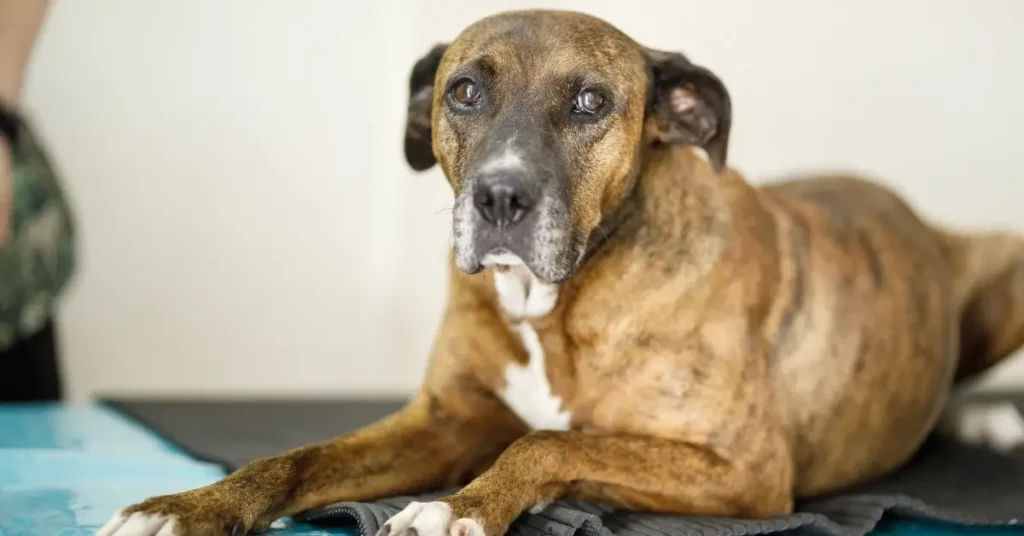
The Importance of Patience
Patience is crucial in every training, especially when dealing with older dogs. It’s important to understand that older dogs may take longer to learn new skills and behaviors than younger dogs.
One of the biggest mistakes dog owners can make is giving up too soon. It’s essential to realize that “how to train an older dog” requires more time for learning new skills and tricks. Consistent repetition is vital if you want your loyal companion to remain motivated.
Always have realistic expectations and celebrate small victories. Remember that every dog is different, and what might work effortlessly for other dogs may not work right away for your furry friend.
Keep training sessions short: Older dogs can tire quickly, so it’s best to keep training sessions shorter and repeat the exercises more frequently.
As you can see, the topic of “how to train an older dog” is comprehensive and complex.
Training and new exercises should always be fun, motivating, and varied.
Before each training, make sure you have the prerequisites and the right equipment, that your furry friend is in good shape, and that you approach the sessions with balance and patience.
During the exercises, pay attention to the behavior of your older dog and watch for signs of exhaustion or physical limitations.
Reward good behavior and use positive reinforcement as a motivational tool, giving your dog the time they need to learn new things.
If you follow these points, the challenge of “how to train an older dog” is almost solved, and the two of you can enjoy many beautiful moments together in the future.
How To Train An Older Dog: Our Opinion
Training an older dog can be a rewarding journey, and understanding how to train an older dog is essential. We firmly believe that it’s not just about teaching new tricks but also about promoting the mental and physical well-being of your senior dog.
First and foremost, empathy is essential for dealing with behavioral changes in an older dog. The behavior of older dogs can change due to memory loss, anxiety, or health issues. When considering the process of teaching an older dog new tricks, punishment is NEVER a solution. Instead, we advocate for positive reinforcement and reward-based training methods.
Furthermore, regular exercise and mental stimulation are crucial for your senior companion. Adjust the activity level to their needs, and keep them mentally active with interactive toys and socialization. When exploring how to train an older dog, the importance of patience cannot be overstated. Every dog is unique, and their learning pace may vary. Realistic expectations and consistent, shorter training sessions are the key to success.
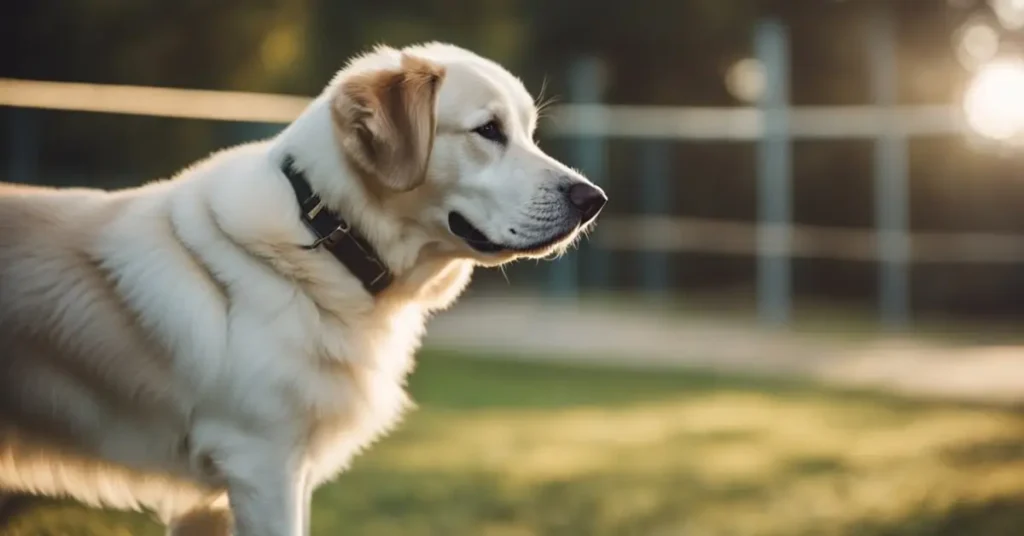
How To Train An Older Dog: Frequently Asked Questions
Can older dogs still be trained?
Yes, older dogs can still be trained. Positive reinforcement training can be effective in teaching new behaviors and correcting unwanted ones. While older dogs may have some physical limitations, they are still capable of learning and adapting to new situations.
What age is too late to train a dog?
There is no age that is too late to train a dog. Even older dogs can be trained using positive reinforcement methods. However, it may take more time and patience to train an older dog compared to a young puppy.
Can you train an old dog not to pee in the house?
Yes, it is possible to train an old dog not to pee in the house. Positive reinforcement training can be effective in teaching the dog where and when to go. Consistency and patience are key in this process, and it may take more time to train an older dog compared to a young puppy.
How to train an older dog to walk on a leash?
To train an older dog to walk on a leash, use positive reinforcement training by rewarding the dog with treats and praise when they walks calmly beside you without pulling. Start with short walks and gradually increase the distance. Consistency and patience are key in this process.
How To Train An Older Dog?
To train an older dog, use positive reinforcement training by rewarding good behavior with treats and praise. Start with basic commands and gradually increase the difficulty. Consistency and patience are key in this process, and it may take more time to train an older dog compared to a young puppy.
We appreciate you taking the time to read our post on “How To Train An Older Dog.” Do you have any further suggestions or thoughts on the topic? Feel free to leave us a comment.
